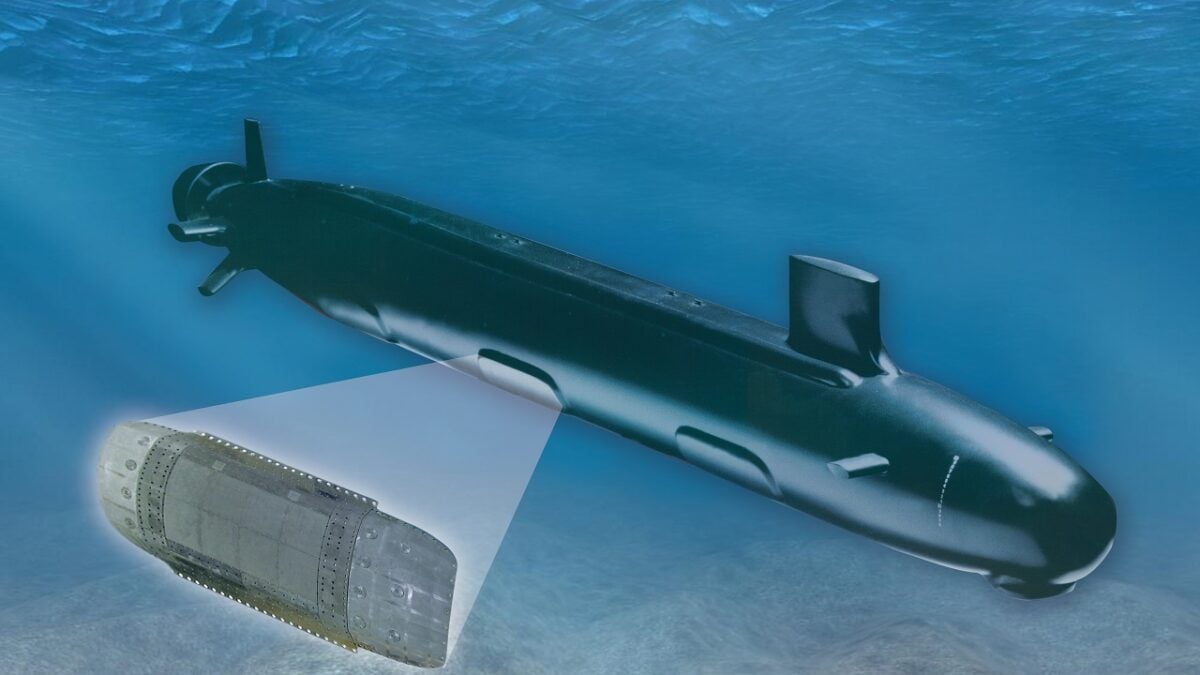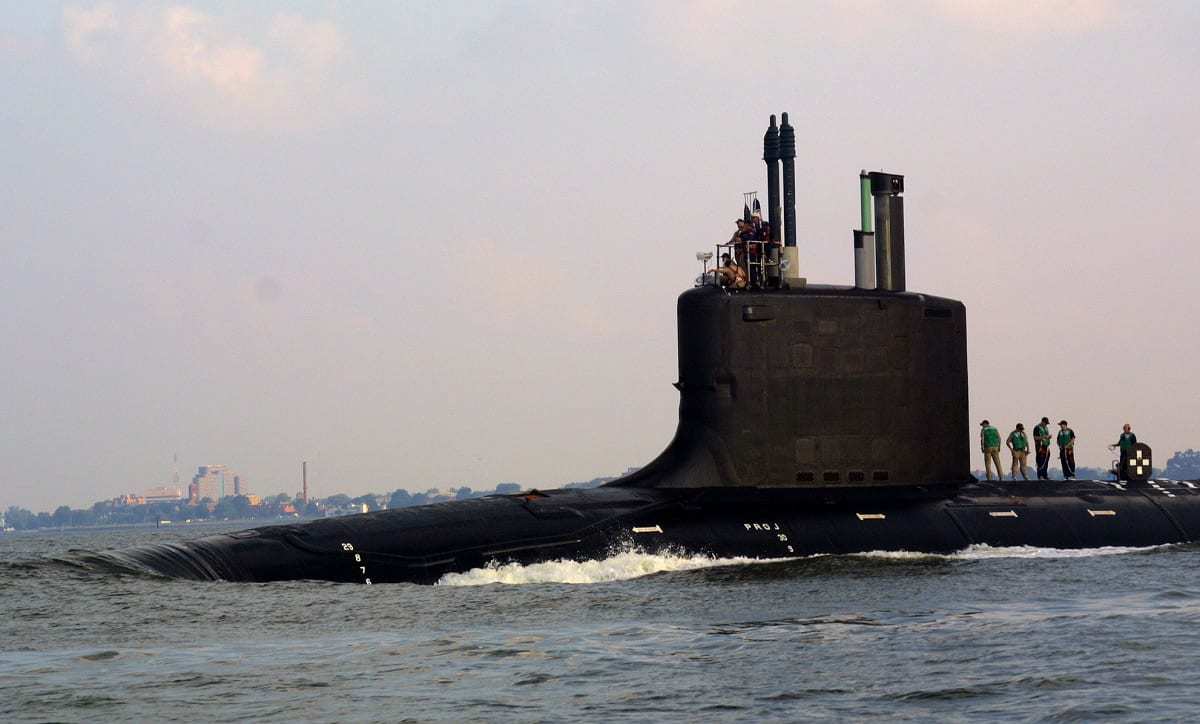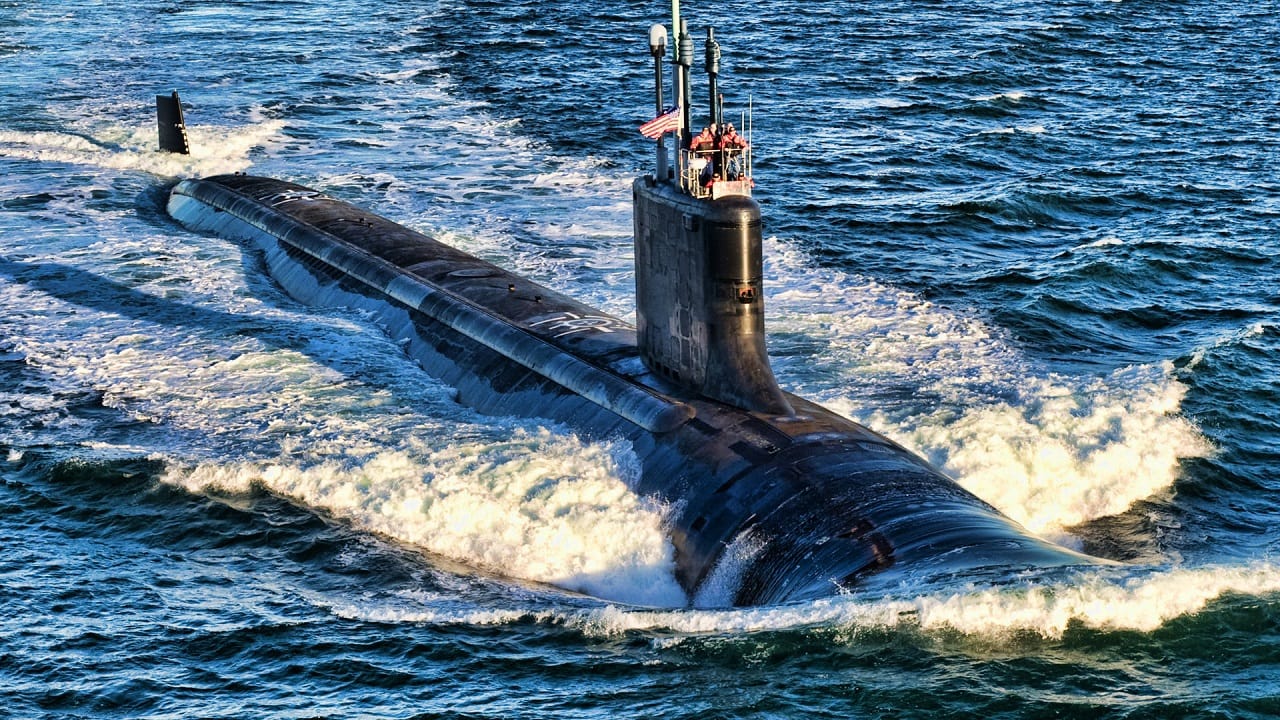What We Know About the Virginia-Class Block V – In early April, President Joe Biden and First Lady Jill Biden attended the long-delayed commissioning ceremony of the USS Delaware (SSN-791), the last Virginia Block III series of nuclear-powered attack subs. The revision is characterized by the addition of a new bow and an advanced sonar array.
The Virginia-class is expected to remain the backbone of the United States Navy’s attack-sub fleet and ten of the boats are of the Block IV models. To date, three have been delivered while seven are now under construction. Those will be followed by an additional ten Block V Virginia-class subs that were ordered in 2019-21.
The Block V will bring additional land-attack capability thanks to the new Virginia Payload Module (VPM) mid-body section.
Block V – Improving on the Virginia-class
The VPM will give the Virginia-class, which is already a heavily armed nuclear-powered fast-attack submarine, a massive increase in capabilities. The Block V will greatly increase the number of missiles that can be carried and essentially make it a cruise missile submarine (SSGN).
The Block V boats include an eighty-foot midsection added to support twenty-eight additional vertical-launch missile tubes. With the VPM, located as an extra section on the submarines, it will increase the Tomahawk fire-power capacity from twelve missiles up to forty. The VPMs were added to help compensate for the loss in firepower associated with the expected retirement of four Ohio-class submarines that carry non-nuclear missiles.
The Block V submarines are larger than the previous versions, with the length increased from 377 feet to 460 feet, and with greater displacement from 7,800 tons to 10,200 tons. As a result, the Block V versions of the Virginia-class are the second-largest U.S. submarines produced behind only the Ohio-class.
The VPM will further increase the number of torpedo-sized weapons carried by each submarine from about thirty-seven to about sixty-five, an increase of seventy-six percent. Moreover, with advancements in hypersonic missile technology, the Virginia-class’s larger launcher will be well suited to host such weapons once they are deployable. The boats can also host the new version of the anti-ship Maritime Strike Tomahawk.
Yet, the installation of the VPM in the Block V won’t take away from what the boats do best.
Designed for use in both the open-ocean and for littoral missions, which include anti-submarine warfare (ASW) and intelligence gathering operations, the U.S. Navy’s Virginia -class was developed to replace the more expensive Seawolf-class while still providing a capable boat to address nautical threats from near-peer adversaries in the 21st century.
Since entering service in 2004, the Virginia-class subs have been able to support five of the U.S. Navy’s six maritime strategy core capabilities including sea control, power projection, forward presence, maritime security and deterrence. It is able to do this by providing a combination of stealth, endurance, mobility and firepower. The SSNs have a fly-by-wire ship control system that also provides improved shallow-water ship handling, while subs were also designed to deploy special operator forces including Navy SEALS. A reconfigurable torpedo room can accommodate a large number of SOF and all their equipment for prolonged deployments and future off-board payloads.

Block IV Virginia-class Submarine.
All of the ten planned Block V submarines will also receive acoustic superiority upgrades, which the Navy has seen as crucial to maintaining design superiority over Russian and Chinese submarines. The overall design will differ from the Block IV boats by approximately twenty percent, according to a February 2022 Congressional Research Service (CRS) report.
“Most Virginia-class boats procured in FY2019 and subsequent years are to be built with the Virginia Payload Module (VPM), an additional, 84-foot-long, mid-body section equipped with four large-diameter, vertical launch tubes for storing and launching additional Tomahawk missiles or other payloads. When procured at a rate of two boats per year, VPM-equipped Virginia-class SSNs have an estimated procurement cost of about $3.45 billion per boat,” the reported noted.

Portsmouth, Va. (Aug. 25, 2004) – The nation’s newest and most advanced nuclear-powered attack submarine PCU Virginia (SSN 774) passes the skyline of Portsmouth, Va., on its the way to Norfolk Naval Shipyard upon completion of Bravo sea trials. Virginia is the NavyÕs only major combatant ready to join the fleet that was designed with the post-Cold War security environment in mind and embodies the warfighting and operational capabilities required to dominate the littorals while maintaining undersea dominance in the open ocean. U.S. Navy photo by Journalist 2nd Class Christina M. Shaw (RELEASED)
Now a Senior Editor for 1945, Peter Suciu is a Michigan-based writer who has contributed to more than four dozen magazines, newspapers and websites. He regularly writes about military hardware, and is the author of several books on military headgear including A Gallery of Military Headdress, which is available on Amazon.com. Peter is also a Contributing Writer for Forbes.

